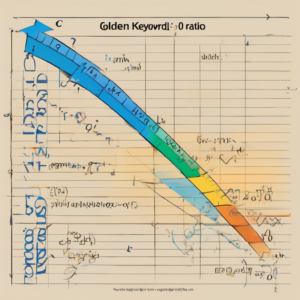Keyword Golden Ratio (KGR) Calculator
Understanding tHE KGR Keyword Tool
The Keyword Golden Ratio (KGR) is an idea delivered by Doug Cunnington, a fruitful associate marketer and founding father of the Niche Site Project. It’s A method for identifying low-opposition keywords that can be simpler to rank in search engine results pages (SERPs), especially for newer or smaller websites.
Here’s an in-depth breakdown of the Keyword Golden Ratio:
1.Definition:
The KGR is a ratio that compares the number of Google pursue results (sometimes called “allintitle”)” results) to the monthly seek volume of a keyword. The formula is:
KGR= Number of Allintitle Results/ Monthly Search Volume*100
The lower the ensuing ratio, the better the keyword is for concentrating on.
1.Finding KGR Keywords:
- Keyword Research: This involves using tools like Google Keyword Planner, SEMrush, Ahrefs, or Ubersuggest to discover keywords applicable to your niche or subject matter. These Tools provide information about the amount, competition, and associated keywords, helping you build a list of capability keywords to target.
2.Calculating KGR:
- Once you have a list of capability keywords, calculate each KGR by dividing the “allintitle” effects by the month-to-month search extent. “Allintitle” outcomes refer to the variety of web pages with the target keyword in their identify tag, indicating direct opposition to that keyword in search engine results.
3.Ideal KGR:
- The perfect KGR is usually between 0.25 and 1.0. Keywords with a ratio under 0.25 are regularly simpler to rank for because they have fewer competing pages than their search volume. Keywords with ratios above 1.0 may be too competitive, requiring extra effort and resources to rank efficiently.
4.Interpretation:
- Low KGR: A low ratio (under 0.25) suggests that the keyword is underserved, which means there are few competing pages focused on that unique keyword compared to its search quantity. These key phrases are top targets for content introductions since they provide a more significant opportunity for ranking nicely in seeking outcomes.
- High KGR: An excessive ratio (above 1.0) shows high competition relative to search volume. While these keywords may still be treasured, they’re generally more challenging to rank for and require more optimization efforts and assets.
5.Implementation:
- Content Creation: Once you’ve identified low KGR keywords, create splendid content focused on key phrases. Ensure that your content material provides a fee to customers, is well-optimized for search engine marketing best practices, and addresses the intent in the back of the quest queries.
- Monitoring and Adjusting: Monitor your scores for KGR-targeted key phrases and alter your approach as wanted. This may involve tweaking your content material, building one-way links, or refining your keyword primarily based on overall performance metrics.
6.Limitations:
- Accuracy: While the KGR is a beneficial guiding principle, it is not a foolproof approach for keyword studies. Other factors, such as backlinks, content material quality, and personal purpose, additionally impact ratings and must be considered alongside the KGR.
- Evolution of Search: Search algorithms and competition can trade over the years, affecting the competitiveness of keywords. Regularly update your keyword studies to conform to these modifications and stay competitive within the ever-evolving panorama of search engine optimization.
Keyword golden ratio: The entirety you want to know about KGR
The Keyword Golden Ratio (KGR) is an idea developed by Doug Cunnington, a prominent parent in SEO (SEO). It’s a technique to pick out low-opposition keywords that are simpler to rank in search engine consequences pages (SERPs). The idea behind the KGR is to balance search volume and competition, thereby maximizing the possibility of ranking well for a given keyword.
Here’s everything you want to understand about the Keyword Golden Ratio:
1.Explanation
The KGR is a system used to determine a keyword’s competitiveness by dividing the range of search outcomes by the keyword’s search quantity. The formula is expressed as KGR = (Number of Allintitle Results) / (Monthly Search Volume), where “Allintitle” refers to the range of internet pages with the keyword of their identify tag.
2.Finding Low-Competition Keywords:
Using the KGR to perceive key phrases with much less than zero ratios.25 indicates fewer than 250 allintitle consequences for every 1,000 month-to-month searches. Such keywords are considered “golden” because they have low opposition and decent search extent, making them less challenging to rank for.
3.Application:
To efficiently observe the KGR, search engine marketing practitioners usually begin by conducting keyword research using Equipment like Google Keyword Planner, SEMrush, or Ahrefs to discover potential vital phrases relevant to their content or niche. They then calculate the KGR for these keywords to determine which are worth concentrating on.
4.Benefits:
By targeting keywords with a low KGR, website owners and Content producers can increase their chances of ranking on the first page of search results. This can result in higher organic site visitors, better visibility, and greater conversions or income.
5.Continuous Monitoring:
SEO is dynamic, and keyword competition can change over time. Therefore, It’s critical to consistently exhibit and update your keyword approach based on changes in seek traits, competitor interest, and set of rules updates.
What is the keyword golden ratio?
The Keyword Golden Ratio (KGR) is an SEO (search engine optimization) strategy that pinpoints effective critical phrases for content introduction. It calculates the ratio among the variety of Google search consequences with a particular keyword of their identify tag (“Allintitle” consequences) and the month-to-month seek volume for that keyword. Keywords with a KGR beneath 0.25 are considered “golden,” indicating low opposition relative to their sought quantity. These golden keywords present opportunities for website owners and content creators to use goal terms more likely to rank properly in search engine results pages (SERPs) and appeal to organic site visitors.
By leveraging the KGR, search engine marketing practitioners can optimize their content material approach by specializing in key phrases that balance seek volume and opposition. Targeting those low-competition keywords identified via the KGR approach will increase the likelihood of achieving better rankings in SERPs, leading to advanced visibility and organic site visitors. Ultimately, the keyword golden ratio is a precious device for steering keyword selection and content optimization efforts, supporting website owners in enhancing their search engine overall performance and achieving their online objectives.
How to calculate the keyword golden ratio
Calculating the keyword golden ratio (KGR) entails a truthful process that starts by determining applicable vital phrases and analyzing their search volume and competition. Here’s an in-depth rationalization of the way to figure out the KGR:
1.Keyword Research:
Conduct keyword research to find phrases associated with your content or interest. You can use tools like Google Keyword Planner, SEMrush, Ahrefs, or any other keyword studies tool to find the keywords customers seek. Look for keywords that align with your content and have an affordable search extent.
2.Gather Data:
Once you list potential vital phrases, acquire records on their monthly search volume and the number of Google search outcomes with the keyword of their title tag (Allintitle outcomes). You can find this information using keyword studies tools or manually looking at Google.
3.Calculate the KGR:
To calculate the KGR for a keyword, divide the wide variety of Allintitle consequences through the keyword’s month-to-month seek quantity. The components are KGR = (Number of Allintitle Results) / (Monthly Search Volume). For example, if a keyword has 100 Allintitle effects and a monthly search quantity of four hundred, the KGR might be a hundred / four hundred = zero.25.
5.Interpret the Ratio:
Keywords with a KGR of less than 0.25 are considered “golden” because they have rather low competition compared to their seek volume. It helps if you prioritize targeting these keywords in your content material advent and optimization efforts.
6.Repeat the Process:
Keyword competition and seeking developments can trade over the years. Hence, it’s vital to repeat the method of often identifying and studying key phrases to maintain an effective SEO strategy. Continuously display the overall performance of the keyword and modify your content material strategy.
Theory on Why It Works:
- Long-Tail Keywords: KGR focuses on lengthy-tail keywords, which might be more precise and less competitive than broader terms. Long-tail keywords frequently have decreased seek volumes but have higher conversion fees.
- Low Competition: By focusing on keywords with a KGR underneath 0.25, you’re deciding on phrases with a favourable ratio of search volume to competition, increasing your chance of ranking well in search effects.
- User Intent: KGR emphasizes aligning content with personal rationale. Since lengthy-tail keywords are extra particular, they seek queries extra carefully, resulting in higher engagement and conversions.
How to Find a Broad Variety of KGR Keywords:
- Keyword Research Tools: Use keyword research tools like Google Keyword Planner, SEMrush, or Ahrefs to generate keyword ideas.
- Seed Keywords: Start with a few large-seed keywords related to your niche, then use keyword research tools to discover associated long-tail keywords.
- Competitor Analysis: Analyze your competition’s websites to identify the keywords they’re focused on and uncover potential KGR opportunities inside your niche.
KGR Success Stories:
- Increased Organic Traffic: Many search engine marketing practitioners record notable gains in organic visits by targeting KGR terms, as these phrases are handy to rank for and can appeal to applicable site users.
- Improved Conversion Rates: Since KGR focuses on long-tail keywords that match user intent more carefully, websites frequently experience better conversion rates from traffic generated by those keywords.
- Cost-Effective Strategy: Targeting low-competition KGR key phrases may be a value-effective SEO method, as it requires less investment in content advent and promoting than focusing on exceptionally competitive keywords.
Pros and Cons of KGR:
Pros:
- Highly Targeted Traffic: KGR attracts highly focused traffic by focusing on long-tail keywords that intently match a person’s motive.
- Cost-Effective: Targeting low-opposition keywords can bring about cost financial savings compared to competing for high-volume, aggressive terms.
- Improved Conversion Rates: Websites frequently experience better conversion costs from site visitors coming through KGR key phrases by targeting particular seek queries.
Cons:
- Limited Search Volume: Since KGR specializes in long-tail keywords, the search volume for individual terms can be lower than that for broader, high-opposition keywords.
- Not Suitable for All Niches: Some Additional niches may have limited opportunities. For minimal antagonism, essential words make it hard to find feasible KGR objectives.
- Dynamic Nature: Keyword opposition and seek trends can alternate over time, requiring non-stop monitoring and adjustment of KGR keyword techniques.
Tips for Ranking KGR Keywords:
- Create High-Quality Content: Produce informative, enticing content that addresses the desires of your audience and gives cost.
- Optimize On-Page search engine optimization: Ensure your content is optimized for engines like Google by including target keywords in titles, headings, meta descriptions, and the body textual content.
- Build Relevant Backlinks: Earn excellent one-way links from authoritative websites in your area of interest to enhance your website’s authority and credibility.
- Regularly Monitor Performance: Continuously display the overall performance of your KGR key phrases and modify your strategy based totally on modifications in keyword competition and search trends.


